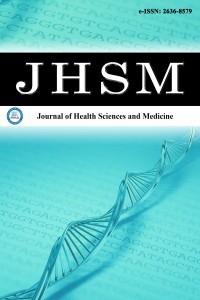
Journal of Health Sciences and Medicine
Yazarlar: ["Şaziye Melike IŞIK"]
Konular:-
DOI:10.32322/jhsm.1106023
Anahtar Kelimeler:COVID-19,Inflammatory index,SII,NLR
Özet: Aim: In recent years, inflammation-based indices obtained from hematologic parameters have been shown to have prognostic value in various inflammatory diseases and cancer types. In this study, we aimed to investigate whether inflammation indices could be used to predict mortality in patients with COVID-19. Material and Method: A total of 295 patients with a proven diagnosis of COVID-19 who were followed up in the intensive care unit were included in this retrospective, cross-sectional study. The patients were divided into two groups, survivors and non-survivors. Results: D-dimer (HR:1.001, 95% CI:1-1.001) and troponin (HR: 1.001 95% CI: 1-1.001) levels of non-survivors were significantly higher in univariate analyses (p<0.05). Procalcitonin levels of whom were found to be high in univariate (HR: 1.018 95% CI: 1.003 – 1.034) and multivariate (HR:1.02 95% CI: 1.004-1.037) analyses (p<0.05). There was no significant difference between the groups in terms of median values of PLR, SIRI, and AISI indices (p>0.05). The median NLR value of the survivors was 7.45, while it was 11.39 in the non-survivors, and this difference was statistically significant (p<0.001). The median value of the SII index of the non-survivors was found as 2421.02, which was significantly higher than the survivors (p<0.001). The value of NLR and SII indices in predicting mortality in COVID-19 was evaluated using ROC analysis (NLR: AUC=0.644, 95%CI: 0.581-0.708, p<0.001; SII: AUC=0.584, 95%CI: 0.517-0.651, p=0.017). When the cut-off value for NLR was accepted as 9.574, the sensitivity was 59.3% and the specificity was 67% in predicting mortality. When the cut-off value for SII was accepted as 2285,846, it was found that it could predict mortality with a sensitivity of 52.38% and specificity of 66.04%. Conclusion: SII and NLR indices can predict mortality in patients with COVID-19 followed up in the intensive care unit.